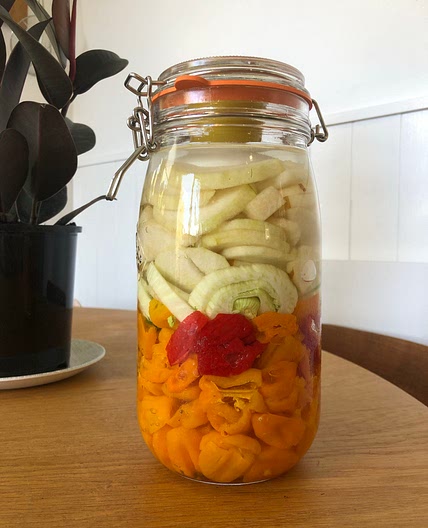Bosc pear
 Fridge
FridgeBosc pears are native to France and Belgium, although there is still fierce debate as to which of these two countries it originated in. However, what is known is that Bosc Pears were discovered sometime in the early 1800s. They’re also known by the name Kaiser Alexander and the Buerre Bosc, which refers to the buttery flesh of the fruit. Bosc pears are unique and recognizable in their color: a warm cinnamon brown with obvious russeting over the skin. Aside from being popular with cooks, they’re also a firm favorite with artists thanks to their deep, fall colored hue, the natural russeting, and their elegant appearance. They ripen fairly early and have slightly harder flesh than other pears. Despite the crunchier flesh and firm skin, they’re very pleasant to eat. Bosc pears are juicy, crunchy, and have a very sweet flavor. On top of that, they’re popular for growing at home as the the tree bears plenty of fruit even as it ages and can cope with a variety of different growing conditions. It tends to be fairly easy to keep them alive and thriving, so having your own bosc pear supply is very doable as long as you have garden space. Because of the firmer flesh, these pears are popular with cooks. They’re good candidates for baking, broiling, or poaching because of how well they retain their shape and texture. The sweet flavor is also quite strong in its own right so is less likely to be overshadowed by other ingredients during the cooking process.
Bosc pear nutrition and vitamin info per 100g
| Energy | 67 | kcal |
| Total Fat | 0.09000000357627869 | g |
| Carbohydrate Total | 16.100000381469727 | g |
| Sugars | 10.229999542236328 | g |
| Protein | 0.36000001430511475 | g |
| Sodium | 1 | mg |
| Fiber | 3.0999999046325684 | g |
37 recipes to cook with Bosc pear
Next PageBosc pear substitutes
- Regular substitute






